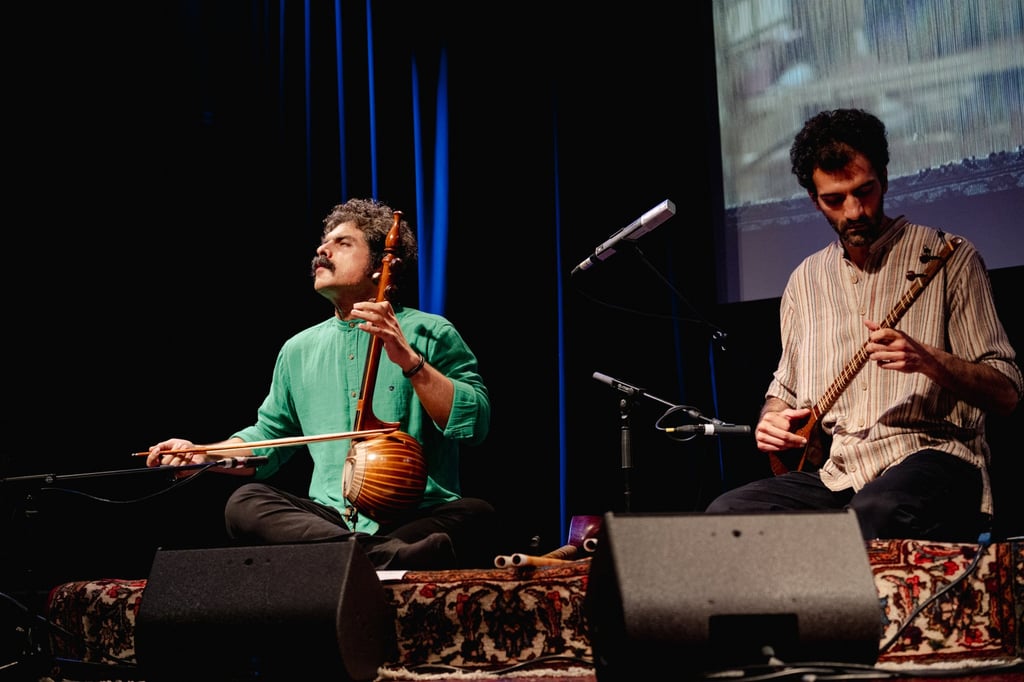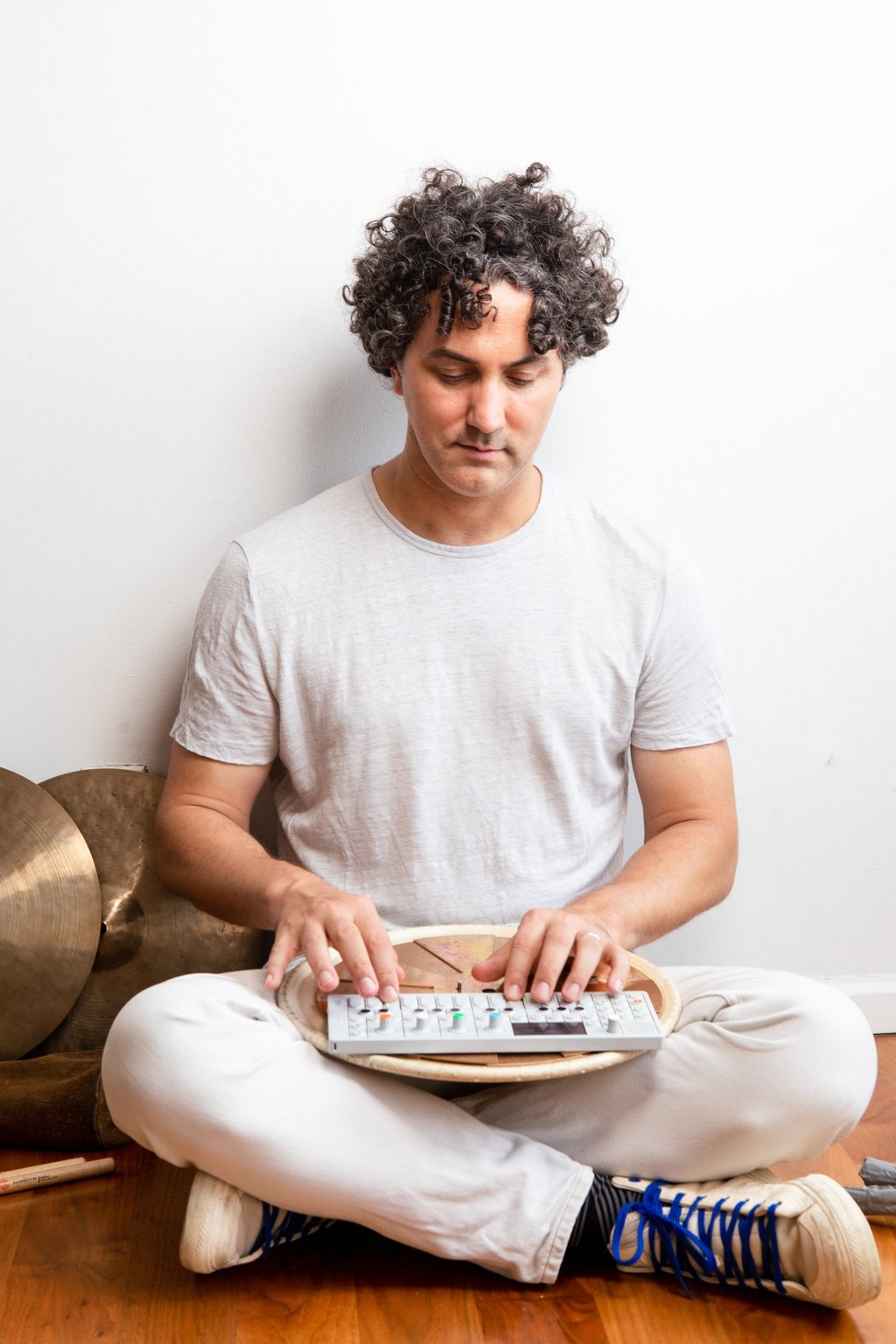Persian rug makers and Syrian clarinettist’s New York vibe offer evocative melodies
Academic and composer Mehdi Aminian’s The Woven Sounds and Concert by Kinan Azmeh will both feature at Hong Kong’s cultural Asia+ Festival

Music that blends the styles of different cultures will form an important part of Hong Kong’s second Asia+ Festival, which showcases more than 100 performances and activities featuring the essence of cultural traditions and innovations by artists from nearly 30 countries.
Presented by the city’s Culture, Sports and Tourism Bureau and organised by the Leisure and Cultural Services Department, the three-month festival, which runs until November, aims to highlight outstanding artists from countries in Asia and beyond, especially those linked by the Belt and Road Initiative, China’s plan to develop a global trading network.
Musicians often leave their home countries and find success after settling down in another part of the world, but wherever they go, their art often reflects their cultural origins. Two of the mesmerising and melodic experiences during this year’s festival in October and November respectively are cases in point.
“The Woven Sounds” concert, featuring traditional Persian tunes performed by Mehdi Aminian, an ethnomusicologist, and members of his eponymous ensemble, is centred on the millennia-old craft of Persian carpet making – inscribed on Unesco’s Lists of Intangible Cultural Heritage – and a music tradition that is tied to it.
The performance features an almost-lost practice known as naqshe khani, or “pattern singing”, which has been passed down from generation to generation, but neglected in recent years. Weavers would turn the carpet patterns – governed by the long, vertical yarn, or warp, and the shorter, horizontal yarn or weft – into lyrics and sing them aloud, along with casual conversations, to let other workers know the specific pattern being used.
“One weaver with the [pattern map] starts on the left side and the other weaver sits on the right side,” Aminian, who was born in Iran and is now based in Austria, says. “The weaver who has the map would sing the patterns to the other weaver and they would reach to each other in the middle because carpet patterns are symmetrical.”

He says the system is complex, with its own special grammar and vocabulary. “These weavers are learning it from the time they are born and they grow up with this tradition.”
After years of research, Aminian has recreated this ancient custom on stage – the set resembling the home of a traditional weaver – as he and his ensemble play traditional Persian instruments rarely played in Hong Kong, including a ney (flute), setar (stringed instrument) and kamancheh (bowed string instrument), while a weaver sings and makes carpets.
“The performance was inspired when Aminian was talking to a compatriot, who mentioned naqshe khani in passing, which piqued his interest as an academic so he decided to find out more.
He says the tradition has been passed down only by word or mouth and has never been systematically documented. The rapid growth of machine-made carpets has seen the traditional practice of hand-woven rugs and the use of naqshe khani fade in significance.
“In 2002, there were around 2.5 million weavers [in Iran] and the number should be around 300,000 today,” Aminian says.

Definitive details about the date of the origins of Persian rug-making have never been verified, but one well-preserved carpet, believed to have been made in Persia, which was discovered in the Pazyryk Valley in Siberia, Russia, is believed to date back to the 5th century BC.
“When you look at that carpet, it has such complexity,” Aminian says. “One could be sure that it was woven by a carpet map, and I would not be surprised even if this carpet has been woven by pattern singing.”
He decided to embark on a documentary project called “The Woven Sounds”, to preserve this tradition before it was too late. The project draws on the preliminary results of a series of fieldwork trips he carried out in his home country between 2017 and 2022 in the provinces of Isfahan, Fars and Kerman and Bakhtiari.
With a scholarship from the Austrian Academy of Sciences, an institution that is focused on science and research, he was able to continue the research project as part of his doctor of philosophy studies at the University of Vienna.
However, Amianian never thought about turning the project into a stage performance until the idea was suggested by Michael Dreyer, director of Germany’s music festival, the Morgenland Festival.
“In the beginning, I couldn’t make any connection,” Aminian says. “When he put this seed inside my thoughts, it became my daily routine of thinking about it, and then slowly, slowly the ways showed it to me.”
The performance of Aminian’s “The Woven Sounds” is at 8pm on October 19 at the Sheung Wan Civic Centre Theatre, which will be followed by a free meet-the-artist session.
Potential audience members who wish to find out more about the subject can attend events on the two days prior to the concert. The first, a weaving workshop, which features English instruction, is at 7.30pm on October 17 at The Annex at The Mills – formerly Nan Fung Cotton Mills – in Chai Wan Kok, Tsuen Wan. The second is “The Woven Sounds” documentary screening and sharing session, again in English, which will have Aminian as the speaker, at 7.30pm on October 18 at Fabrica Atrium at The Mills.
Hong Kong showgoers will also be in for a treat at “Concert by Kinan Azmeh”, at 8pm on November 22 and 23 at the Studio Theatre of the Hong Kong Cultural Centre, in Tsim Sha Tsui.
The internationally renowned clarinettist and 2019 winner of Germany’s Opus Klassik will perform four compositions of different styles with one of his long-time collaborators, jazz drummer and composer John Hadfield whose dynamic performances and dedication to music have taken him to stages worldwide.

Originally from the Syrian capital, Damascus, Azmeh is known around the world as a soloist, composer of contemporary classical music and improviser. He has performed at many of the leading international concert venues including Opera Bastille, in Paris, the Tchaikovsky Grand Hall, in Moscow and London’s Royal Albert Hall.
He has also appeared as a soloist with orchestras including the New York Philharmonic and the London Philharmonic, and is a core member of the Grammy award-winning Silkroad Ensemble founded by cellist Yo-Yo Ma.
He has lived in New York since moving to the American city to study at The Juilliard School, but he says his home country remains close to his heart.
“Syria was part of the Silk Road [ancient trade route], and it has been home for many, many different traditions,” he says. “Most of them are still living in that piece of geography. So there’s a very rich musical vocabulary that I always channel in my work.”
Azmeh first arrived in the Big Apple the week before the September 11, 2001 terror attacks on the United States, including the city’s Twin Towers, and the geopolitical turbulence in Syria and the region where it is located have had a major impact on his music.
“Certainly some of my music reflects that because I have been heartbroken for so many years witnessing what’s going on with the world, but it doesn’t mean that all my music is about that,” he says. “Some of my music is a reflection on the world we live in, some other works are about reimagining a better world, and some others are more abstract in nature.
“I believe making music is an act of freedom and optimism, and I don’t want my music to be constantly held hostage by tragedy.”

Azmeh, whose music-loving parents work as an electrical engineer and oncologist, originally started to learn the violin as a young child. But being left-handed, he found the instrument challenging, so he switched to an even-handed instrument – choosing the clarinet because it is portable enough to play anywhere in the world.
However, it was not until he experienced a eureka moment in his early teens, while playing the short character piece, “October: Autumn Song” from Tchaikovsky’s The Seasons as part of a young orchestra, that he felt the clarinet truly suited him as a musician.
“I was not doing a good job and the conductor at the time, who was a wonderful mentor of mine, gave me a hard time,” Azmeh says. “He was like, ‘Do it again, do it again, do it again in front of everybody and I was not able to do it. I was slightly crushed by it.”
But back at his home, his parents encouraged him to keep trying and not give up. “I kept playing and playing and playing until I started to play it well,” he says. “I started to cry, not because I was able to do it, but because I was moved for the first time by what I was playing.”
Today, the acclaimed clarinettist is known not only for his multifaceted pieces that reflect his cultural identity as both a Syrian and a New Yorker, but also for his effortless improvisation.
Azmeh’s Hong Kong concerts will see him joined on stage by a selection of young local musicians chosen for their open-mindedness, their “open souls” and their willingness “to jump on this adventure with love with me”, he says.
In addition to the two main concerts, Azmeh will also deliver a composition and improvisation workshop in English, suitable for musicians aged six or above, on November 20 from 7.30pm at the Podium Workshop at Hong Kong Cultural Centre. He will also give a free clarinet masterclass in English at 7.30pm on November 21 at the Recital Hall of the Hong Kong Academy for Performing Arts in Wan Chai. There will also be an outreach performance at The Piazza of the Cultural Centre at 3pm on November 23.
For full details about all of the performances, go to the official Asia+ Festival 2024 website.